Tools of the Trade
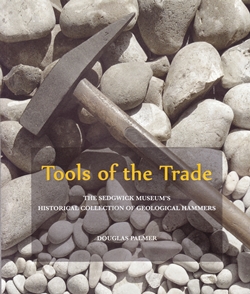 When the legendary geologist science-writer (now artist) Anna Grayson was posing before the Old Man of Hoy with Ray Mears, Kate Humble and the rest of the team for the Radio Times group photo marking the broadcast of The essential guide to rocks (BBC, 2011), the snapper paused and said ‘Anna dear, can you give your ‘ammer to Ray?’. She refused - and quite right too. The hammer is, as she protested, the tool of the geologist’s trade.
When the legendary geologist science-writer (now artist) Anna Grayson was posing before the Old Man of Hoy with Ray Mears, Kate Humble and the rest of the team for the Radio Times group photo marking the broadcast of The essential guide to rocks (BBC, 2011), the snapper paused and said ‘Anna dear, can you give your ‘ammer to Ray?’. She refused - and quite right too. The hammer is, as she protested, the tool of the geologist’s trade.
Geologists love their hammers like musicians love their instruments. To lose a treasured hammer (as we have probably all discovered) is a hammer-blow in itself. And the hammers of the great, like the James Tubbs bow used by cellist Jaqueline Du Pré (on sale as I write this, and expected to fetch tens of thousands of pounds), are items with a mystical resonance.
The Society has a reasonable selection itself. Charles Lyell’s hammer (one of them – many great geologists have owned and donated several) can be seen on display in the Lyell Room. We also boast a Buckland, two Murchisons and a Lapworth. But our collection cannot compare with the rich trove amassed over the years by Cambridge’s Sedgwick Museum. This exhibition booklet is a beautiful souvenir, ensuring that the texts that one’s feet had grown too tired to permit you to read properly standing up, can be digested at leisure.
Palmer discusses the purpose of the hammer – including Darwin’s use of it as ‘a missile’ (he also used it to hunt, capturing and killing a new species of fox, while the beast was transfixed by the sight of HMS Beagle at anchor in the bay below). Palmer goes on to describe the history of this ‘simplest of scientific instruments’, and its graphical use in all those badges of the ‘mente et malleo’ kind, through the ages, and across the world.
He then focuses on those ‘brethren of the hammer’ from the University of Cambridge, which has arguably the greatest claim to being the cradle of our science within higher education. The section of portraits of geologists with their donated hammers (and one of Bulman, holding a banana) brings us up to date - including some famous men whom I myself have witnessed wielding their tools – notably, Harry Whittington and Barrie Rickards.
Indeed Barrie once appeared at my door in hall at a Pal Ass conference, holding the very hammer pictured. He then demanded to know what I was doing in his room, and why his key didn’t work. Proving, perhaps, that the mente and the malleo do not always go perfectly together.
Reviewed by Ted Nield
TOOLS OF THE TRADE: THE SEDGWICK MUSEUM’S HISTORICAL COLLECTION OF GEOLOGICAL HAMMERS by DOUGLAS PALMER 2016. University of Cambridge Museums & Botanic Garden 49pp. ISBN 9780992727017. Sbk. Price: £7.50, available from the Sedgwick Museum. W: www.sedgwickmuseum.org/index.php?page=exhibitions
London Pavement Geology (app)
 In his biography of London, the writer Peter Ackroyd notes that to touch the stones that make up the capital’s great buildings brings you into contact not only with the men and women of our near past who built the city, but allows access to a geological history that is more ancient and mysterious. For the interested ‘urban geologist’, the London Pavement Geology app (from the creators of the website of the same name http://londonpavementgeology.co.uk/) is an excellent interactive guide. The app is free to download for iOS and Android, is easy to use, and it occupies only 33MB of space; this is sufficiently small to fit on most devices.
In his biography of London, the writer Peter Ackroyd notes that to touch the stones that make up the capital’s great buildings brings you into contact not only with the men and women of our near past who built the city, but allows access to a geological history that is more ancient and mysterious. For the interested ‘urban geologist’, the London Pavement Geology app (from the creators of the website of the same name http://londonpavementgeology.co.uk/) is an excellent interactive guide. The app is free to download for iOS and Android, is easy to use, and it occupies only 33MB of space; this is sufficiently small to fit on most devices.
Upon opening the app, the user is presented with the Google Maps view of London. Zooming in to any part of the city reveals a forest of small pins stuck in the map at specific locations, each representing a locality at which an interesting building stone may be found. The pin-heads are colour-coded depending on rock type (igneous, metamorphic, sedimentary), fossil, or geological structure. Pressing any of the pins reveals more information about each locality, including the name of the building stone and rock type, its age, geological period, and even the quarry from which it was derived. A few illustrative photographs help point the user towards the right building.
The most impressive aspect of this app is the number of localities available. All the content is user-generated, although a large number of locations have been drawn from the years of diligent investigation and collation on the part of the app’s creators. The process of adding new locations is easy, although restrictive insofar as you must be standing at the exact location if you want to submit it. New submissions are moderated before publication.
Currently, the app only covers London, which may put off geologists who are not based in the capital. However, it still acts as a useful repository of geological information as many of the building stones in London are used in other cities around the country, and the scope for future expansion to other cities is clearly apparent. For those interested in the rocks around them, London Pavement Geology is well worth downloading.
Reviewed by Matt Loader
London Pavement Geology (v. 1.0.0) is available for iOS and Android devices.
Science and the City: The Mechanics behind the Metropolis
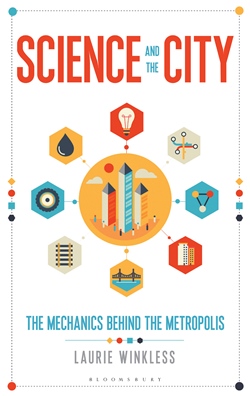 Science and the City is aimed at anyone interested in all aspects of the technology—past, present and under development—used in constructing and running modern cities, ranging from buildings and water supply to cars and the internet. Although it is Laurie Winkless’s first book, she brings to it some years of research in thermoelectric energy harvesting at the National Physical Laboratory plus more than a decade of experience as a science communicator with schools and universities. Her combination of serious homework with a chatty style—bolstered by interviews with an impressive variety of urban experts—mostly works well.
Science and the City is aimed at anyone interested in all aspects of the technology—past, present and under development—used in constructing and running modern cities, ranging from buildings and water supply to cars and the internet. Although it is Laurie Winkless’s first book, she brings to it some years of research in thermoelectric energy harvesting at the National Physical Laboratory plus more than a decade of experience as a science communicator with schools and universities. Her combination of serious homework with a chatty style—bolstered by interviews with an impressive variety of urban experts—mostly works well.
The sections on underground transport and skyscrapers are the main geoscientific attraction. Focusing on London’s current Crossrail project, which Winkless is thrilled to tour with its engineers, she jokes: “How do you bore a tunnel? Talk about trains!” But her detailed discussion of the planning for proposed tunnel routes, and their digging, is anything but boring. A preliminary geological survey with ground-penetrating radar can reveal buried utilities. In Mexico City it unearthed an Aztec pyramid, in Istanbul a Byzantine shipwreck.
Above a tunnel-in-progress, buildings must be constantly monitored with sensors able to detect movement of even thousandths of a millimetre, linked to an alarm at the control centre. In response, a team of grouting engineers working in vertical tunnels a few metres wide injects a cement-like substance through small-diameter pipes radiating into the ground directly beneath the threatened structures. This stabilises the area in which further sinking is predicted, compensating for the loss of soil. “It’s like a filler for the wrinkled face of a city.” Such prophylactic grouting has frequently saved historic buildings across the world that might otherwise have disappeared ‘in the name of progress’.
As for seismic engineering, the chief engineer of the world’s tallest structure, the 828-metre Burj Khalifa in Dubai, tells Winkless that “even in an area with moderate seismic activity, wind usually dominates designs.” That said, huge damping pendulums inside a tall skyscraper, which move in the opposite direction to its sway, have proved useful against both high winds and earthquakes in skyscrapers and bridges in Taiwan and Japan, as Winkless notes. But in her passion for progress, she sometimes neglects tradition. Japan’s first skyscraper, built in Tokyo in 1968, used a flexible steel-frame lattice apparently inspired by the flexible wooden structure of the city’s 17th Century Kan’eiji Temple that enabled it to survive the Great Kanto earthquake of 1923 intact.
Reviewed by Andrew Robinson
SCIENCE AND THE CITY: THE MECHANICS BEHIND THE METROPOLIS by LAURIE WINKLESS. Published by: Bloomsbury Sigma, 2016. ISBN 978 1 4729 1321 0 298pp, List price: £16.99.
Exploring the Planets
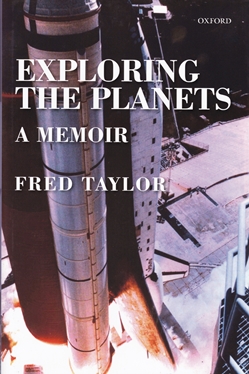 Fred Taylor, author of this entertaining but uneven memoir and erstwhile Professor of Atmospheric and Oceanic Physics at Oxford, was at the cusp of space research for most of his career. He designed and built a lightweight radiometer there and after tedious trials it was chosen to go up in a US Nimbus satellite to investigate Earth’s upper atmosphere. That started things off nicely.
Fred Taylor, author of this entertaining but uneven memoir and erstwhile Professor of Atmospheric and Oceanic Physics at Oxford, was at the cusp of space research for most of his career. He designed and built a lightweight radiometer there and after tedious trials it was chosen to go up in a US Nimbus satellite to investigate Earth’s upper atmosphere. That started things off nicely.
Soon after, Fred moved to the Jet Propulsion Laboratories in Pasadena. After initial disappointment, he grabbed his chance and become Principal Investigator of a team that put atmospheric measuring equipment into the Pioneer space probe to Jupiter and Saturn. It launched successfully from Cape Canaveral in 1978 and brought back valuable data. Backed by that success, Fred was also appointed Principal Investigator for the Pioneer Venus Orbiter in 1979.
Then, in a surprise move Fred, 35, returned to Oxford in 1980 to become a professor and help promote Britain’s space contribution. The investment climate here was not as exuberant as that in the States. Says Fred: “Britain seemed quite austere after California. It wasn’t just the relative poverty and low salaries; there was a certain meanness of spirit that permeated everything. The (funding) system for university research tended to be erratic and unreliable.” Nevertheless, he battled on with some notable successes and eventually, through market integration, the European Space Agency helped fund larger projects.
This memoir tracks his career. At heart, it is a testimonial to earnest endeavour. For me, his experiences in three different work environments (the US; Britain and Europe) provide much of the interest; but at times the text is laden with acronyms and unfamiliar names so it reads a little heavy. Those looking for further insights into the missions won’t get much joy. That information is in previous books. There are lighter moments. His sections about his Aston Martins (and other fast cars), some clashes with the law, and a couple of unfortunate accidents, read much more easily.
The book somewhat disjointed and the poor reproduction of his personal photos did not help. Overall, Fred’s experiences during 50 years of trials and tribulations provides a useful historical record of all that is good (and bad) in space science.
Reviewed by David Edwards
EXPLORING THE PLANETS by FRED TAYLOR. Oxford University Press 2016 ISBN: 9780199671595 (hbk) List price: £25.00 W: https://global.oup.com/academic/product/exploring-the-planets-9780199671595?cc=gb&lang=en&
Tertiary Deep-Marine Reservoirs of the North Sea Region
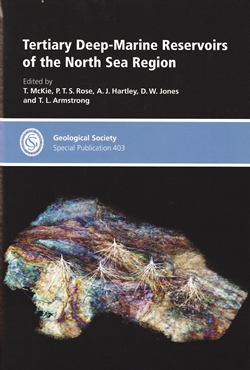 This excellent compilation offers a valuable overview of one of the primary play systems in the North Sea Petroleum Province. McKie et al. have arranged the papers to offer a value-chain perspective, with a range of diverse case studies illustrating the field life cycle from mature basin exploration through development to late life production. It builds on, and is best viewed within, the extensively published regional geological framework that already exists and is widely published.
This excellent compilation offers a valuable overview of one of the primary play systems in the North Sea Petroleum Province. McKie et al. have arranged the papers to offer a value-chain perspective, with a range of diverse case studies illustrating the field life cycle from mature basin exploration through development to late life production. It builds on, and is best viewed within, the extensively published regional geological framework that already exists and is widely published.
The exploration papers in the volume add to this framework and show the value of working data hard and forensically even in well-known and understood plays to unlock value in what have been marginally commercial and subtle plays containing significant stratigraphic elements to traps. Appropriately the focus of the volume is slightly weighted towards field development and production offering a diverse range of interesting and well-written case histories. Examples range from near field exploration in such as Lochranza and Arran through to mature field production cases from the Forties, Alba and Gannet fields.
The papers also show how modern thinking on deep-water depositional systems and the application of new technology (notably seismic imaging) can unlock value in complex heterolithic reservoirs, fan margin systems and in mature fields with up to 40 years’ production history. The critical value of integration and the effective use of diverse data sets is also an important thread that permeates the volume.
I would commend this to any subsurface practitioners working not only the North Sea but also some of the newer areas of deep-water exploration and field development globally where much can be gleaned for these well-described and documented examples. It is also a good reference for those teaching reservoir systems or training classes covering this important area of reservoir geology. Papers are, overall, well written, and the extensive use of colour images adds a great deal to the value. Much valuable hard data and many figures enhance the text and offer an easy-to-read format as well as great reference material.
Having worked on many of these reservoir systems in the past, this offered a readable and informative update – as well as a refreshing message: that value remains in a mature play systems and late-life fields with significant production challenges. It also demonstrates the impact of well-executed petroleum geology and subsurface assessment, building on sound geological principles together with understanding of petrophysical and reservoir engineering.
Reviewed by Mike Bowman
TERTIARY DEEP-MARINE RESERVOIRS OF THE NORTH SEA REGION by T MCKIE, P T S ROSE, D W JONES & T L ARMSTRONG (eds), 2015. Geological Society Special Publication 403 ISBN: 978-1-86239-656-2, 407pp, hbk. List Price: £100.00. Fellows: £50.00. W: www.geolsoc.org.uk/SP403.
The Geology of Eigg
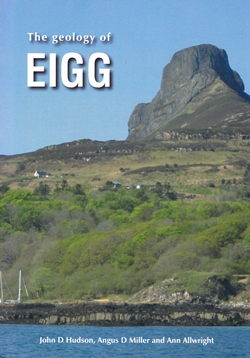 Originally written in 2003, this guide was sold in the island craft shop, proving popular with visitors. This revised and updated edition has been published by the Edinburgh Geological Society in association with the Isle of Eigg Heritage Trust, with the aim of promoting the interesting geology and spectacular scenery of this small island to a wider audience.
Originally written in 2003, this guide was sold in the island craft shop, proving popular with visitors. This revised and updated edition has been published by the Edinburgh Geological Society in association with the Isle of Eigg Heritage Trust, with the aim of promoting the interesting geology and spectacular scenery of this small island to a wider audience.
Eigg is a unique Hebridean island where a local community buyout in 1997 led to the development of the first wind, water and solar-powered electricity grid. As the ferry approaches the island visitors’ eyes are drawn by the impressive cliffs of pitchstone that form the Sgurr. The island’s geology and landforms impress the most casual visitor.
‘The geology of Eigg’ is intended for visitors, whatever their geological knowledge or lack of it. In A5 format, it can be carried in a pocket for easy reference when out walking. This review is based on my experience using it during a family holiday.
The text is clearly written with many colour photographs and the inclusion of a glossary and stratigraphic column is helpful for the non-geologist. Part one describes the geology of Eigg and its regional setting, with individual sections reviewing the stratigraphy of the Jurassic and Cretaceous sediments, the Hebridean Igneous Province and the story of the Sgurr. A review of the ‘Ice Age’ and its impact on the landscape concludes the first part. Reference is also made to Hugh Miller and the Eigg plesiosaur and to Sir Archibald Geikie’s theory on the formation of the Sgurr. The informative text provides sufficient detail for the casual visitor.
There follow seven excursion guides, based on the extensive network of way-marked footpaths. Clearly annotated route maps are included (which can also be purchased from the craft shop). As the island measures five by three miles, all excursions are accessible from the pier, where the café, craft shop and island shop are located.
The first four excursions introduce the visitor to the main features of the geology and landscapes of the island. They can be combined with visits to places of interest such as the ‘Singing Sands’ and ‘Massacre Cave’. There are options to extend these routes for the interested geologist. Excursions five to seven are more strenuous, offering the opportunity to discover the remoter parts of the island.
The booklet was well used during our visit by both geologist and non-geologists and I would recommend it to anyone visiting Eigg as an excellent companion - let down only by poor binding - our copy disintegrated into separate pages.
Reviewed by Richard Wrigley
THE GEOLOGY OF EIGG by JOHN D HUDSON, ANGUS D MILLER, ANN ALLWRIGHT. Edinburgh Geological Society, 2016, 2nd Edn., sbk ISBN-13: 9780904440164, 68pp. List price: £7.50. W: www.edinburghgeolsoc.org/p_sales.html